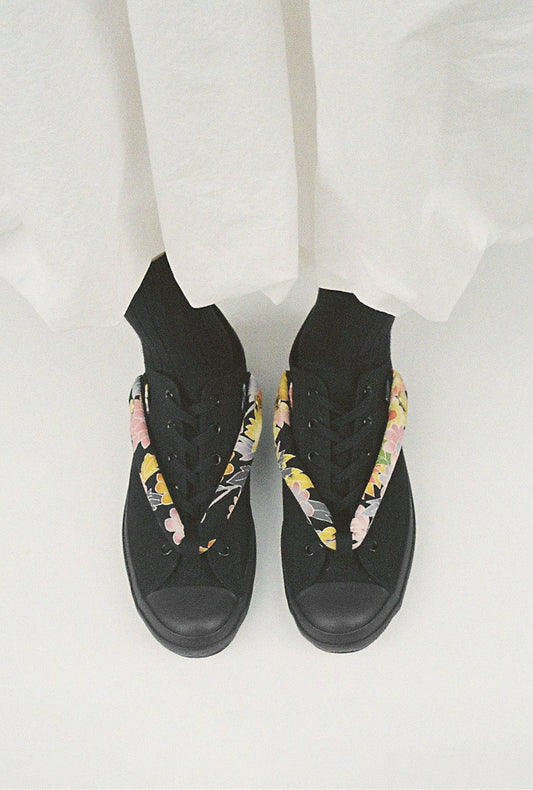
Aomori prefecture (Tohoku area) | Kogin sashi (Kogin embroidery)
Share
We believe that traditional handicrafts are the beauty of Japan and should not be lost, and HANAO SHOSE JAPAN is a project that brings the traditions of textiles and dyeing to the attention of many people and provides an opportunity for each viewer to develop an interest in the local handicrafts associated with them. Here we present textiles and dyed goods from each of Japan's 47 prefectures.
Aomori prefecture (Tohoku area) | Kogin sashi (Kogin embroidery) ― Geometry Born from the Cold ―
In the frigid climate of Aomori, cotton cultivation was nearly impossible, making cotton a luxury item. As a result, farmers wore linen fabric, which was thin and lacked warmth. To improve insulation and durability, they began stitching cotton thread into the weave of the linen fabric—a practice that gave birth to kogin sashi.

The geometric patterns of kogin sashi, passed down for over 300 years, remain unchanged. Unlike other crafts, this tradition was not preserved by specialized artisans but by farming mothers who taught the technique to their children.
Kogin sashi can be categorized into three types:
・Nishi Kogin (Western Kogin)
This style is stitched onto fine fabric made from karamushi (ramie) threads. Since farm work often involved carrying heavy loads, the shoulder areas of the fabric would wear out quickly. The patterns in these areas were kept simple for easier repair.
・Higashi Kogin (Eastern Kogin)
Stitched onto coarser linen woven with thick threads, this style often featured large, bold patterns that stretched from the front to the back of the garment. Unlike the intricate designs of other styles, these patterns prioritized simplicity and impact.
・Mishima Kogin (Three-Striped Kogin) Recognizable by its three vivid horizontal stripes, this style was produced in regions with limited resources, resulting in low production. Mishima Kogin fabrics were often used until they became rags, leaving very few well-preserved examples today.
Click here to read a discussion between Natsujiro Shoten, gallery CASAICO, and Whole Love Kyoto’s Director Sakai (T5 Center Head) about kogin sashi.









